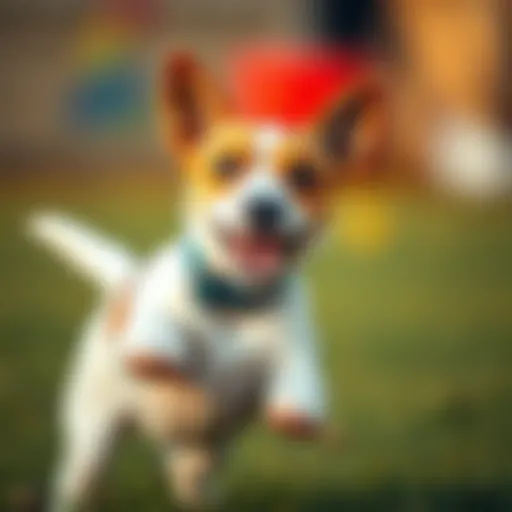Top Indoor Cat Foods to Combat Hairballs Effectively
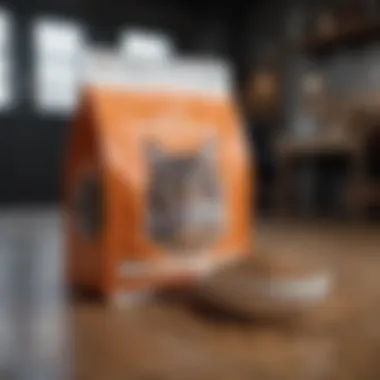

Intro
Hairballs are a common concern for many indoor cats. As they groom themselves, cats inadvertently ingest loose hair, which can accumulate and form troublesome hairballs. This situation not only discomforts our feline companions but can also lead to significant health issues. With the right diet, pet owners can mitigate the occurrence of these unwanted balls of fur.
In this guide, we delve into various aspects of indoor cat care. We will explore how diet directly impacts hairball formation, review products specifically formulated to reduce hairballs, and share valuable tips for promoting overall feline health. This comprehensive overview aims to equip pet owners with the knowledge they need to make informed dietary choices for their indoor cats.
Pet Care and Grooming
Importance of Regular Care
Effective grooming and care are vital for indoor cats. Regular grooming helps reduce the amount of loose fur that cats ingest. Maintaining a consistent grooming schedule can minimize hairballs and promote a healthier coat.
Grooming Techniques by Pet Type
Different breeds may have varying grooming requirements. Long-haired breeds, like Persians, require more frequent brushing—ideally every day. Short-haired breeds may need less frequent grooming yet still benefit from regular brushing to remove dead hair.
Tools and Products Recommendations
Investing in the right tools can enhance grooming effectiveness. Suggested tools include:
- Rubber brushes help remove loose fur.
- Flea combs can help with tangles and mats.
- Deshedding tools effectively reduce shedding.
Seasonal Care Tips
Changes in season can affect shedding patterns. During the spring and fall, indoor cats may shed more. Being aware of these patterns can help owners prepare and adjust their grooming schedules accordingly.
Health and Nutrition
Understanding Pet Nutrition
Nutrition plays a significant role in a cat's overall health. A high-fiber diet is particularly useful in hairball prevention. Ingredients such as beet pulp or psyllium husk can aid in digestion and promote healthy bowel movements.
Common Health Issues by Species
Indoor cats are prone to specific health issues, including obesity and dental problems. Choosing food rich in omega-3 fatty acids can support joint health, while fiber helps normalize digestive processes.
Preventive Care and Regular Check-Ups
Regular veterinary check-ups are essential for early detection of health issues. A balanced diet combined with preventive care can greatly enhance a cat's quality of life.
Food and Dietary Advice
When selecting cat food, look for options that contain a blend of high-quality proteins and fibers. Brands like Royal Canin and Hill's Science Diet offer formulations specifically targeting hairball reduction. Always consult your veterinarian before making significant changes to your cat's diet.
Behavioral Training
Basics of Positive Reinforcement
Positive reinforcement is crucial for training indoor cats. Rewarding cats for good behavior helps develop a trusting relationship.
Training Techniques Users Can Apply
Basic commands, litter training, and discouraging unwanted behaviors can be achieved using positive methods. Treats can significantly motivate a cat to follow commands.
Managing Behavioral Issues
Common issues, like scratching or excessive meowing, can be addressed with patience and proper techniques. Providing alternative scratching posts or interactive toys can help keep cats engaged and satisfied.
Importance of Socialization
Socialization with people and other pets is essential for an indoor cat’s psychological well-being. Gradual introductions and positive interactions can reduce anxiety and stress.
Engaging Activities and Enrichment
Fun Games to Play with Your Pet
Engaging indoor cats through play fosters physical and mental stimulation. Simple activities, such as feather wands or laser pointers, can keep a cat entertained for hours.
DIY Toys and Activities
Homemade toys can be a fun and affordable way to enrich a cat's environment. Consider using crumpled paper, cardboard boxes, or fabric scraps to create engaging toys.
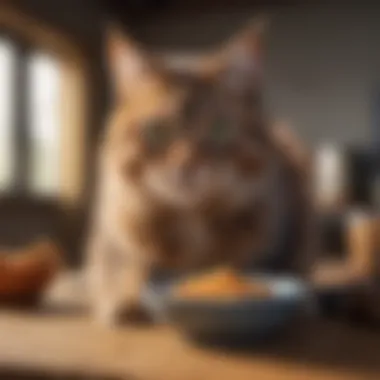

Importance of Mental Stimulation
Mental exercises are just as important as physical ones. Puzzle feeders challenge cats and provide reward-based activities, keeping them mentally sharp.
Outdoor Adventures and Exploration
Supervised outdoor time in safe environments can provide essential stimulation for indoor cats. A leash and harness can allow cats to explore securely, giving them a taste of adventure without compromising safety.
Resources and Community Engagement
Recommended Books and Websites
Owner resources can enhance understanding of feline behavior and nutrition. Websites like Wikipedia and Britannica provide reliable information on various pet-related topics.
Forums and Groups for Pet Owners
Engagement with community forums on platforms like Reddit can provide support and shared experiences among cat owners.
Finding Local Services and Classes
Participation in local pet classes or communities can foster socialization for cats, and opportunities for education for owners.
Encouraging Community Sharing and Contributions
Encouraging pet owners to share experiences promotes a sense of community. This sharing can lead to better practices and collaborative learning.
In summary, selecting the right diet for indoor cats is essential for preventing hairballs and maintaining overall health. A comprehensive approach to grooming, nutrition, behavioral training, and community engagement will significantly enhance the quality of life for our feline companions.
Understanding Hairballs in Cats
Understanding hairballs in cats is essential for any cat owner. These malformations can point to broader health issues, and recognizing them can encourage timely action. Moreover, an awareness of hairballs directly influences the choice of diet, enabling owners to select food that mitigates hairball formation. This section offers insights into hairballs, their causes, and how indoor cats differ from outdoor ones.
What Are Hairballs?
Hairballs, or trichobezoars, are clumps of fur that form in a cat's stomach. They result when a cat ingests hair, often during grooming. This ingestion can come from loose fur or dander. Once swallowed, the hair can accumulate because cats do not digest it like food. While it is normal for cats to pass hairballs, frequent occurrences may indicate underlying issues, such as excessive grooming or allergies.
Why Do Cats Get Hairballs?
Hairballs mainly occur due to grooming habits. Cats, being naturally clean animals, frequently lick their fur. This behavior leads to ingesting loose, dead hair. However, certain factors can exacerbate the formation of hairballs. For instance:
- Seasonal shedding: Cats shed more fur in spring and fall.
- Diet: Poor quality food can lead to excessive grooming.
Understanding these causes can help owners mitigate hairball issues before they escalate into health problems.
Indoor vs.
Outdoor Cats
Indoor and outdoor cats have differing risks associated with hairballs. Indoor cats may face less exposure to allergens and irritants but lack the natural opportunity to wear down their fur. In contrast, outdoor cats often engage in activities that can lead to regular grooming and may ingest less hair overall. Nonetheless, both types can experience issues with hairballs, making it vital for owners to monitor their grooming habits and overall health.
Signs of Hairballs in Cats
Recognizing hairball issues begins with understanding the signs. A cat may display several symptoms, including:
- Frequent vomiting, often containing hairballs.
- Coughing or retching as they attempt to expel the hairball.
- Changes in appetite or behavior, such as eating less or hiding.
If these signs persist, it is crucial to consult a veterinarian, as they may indicate more severe conditions beyond routine hairball occurrences.
Frequent hairballs are not uncommon in cats, but excessive grooming and intake of hair may indicate other underlying health problems that need attention.
Nutritional Needs of Indoor Cats
Understanding the specific nutritional requirements of indoor cats is crucial in promoting their overall health and preventing common issues like hairballs. Indoor cats often lead a more sedentary lifestyle compared to their outdoor counterparts. This difference significantly affects their caloric intake, fiber requirements, and hydration needs. By focusing on these key elements, pet owners can better cater to their feline companions' unique dietary needs.
Caloric Needs for Indoor Cats
Indoor cats typically have lower caloric needs when compared to outdoor cats. Lack of activity means they require a diet that is lower in calories to maintain a healthy weight. On average, an indoor cat needs about 20 calories per pound of body weight daily. This can vary based on age, weight, and health status.
To manage weight effectively, consider measuring food portions and monitoring snacking habits. It’s also important to note that neutered or spayed cats often need fewer calories, as their metabolism may slow down.
Importance of Fiber in Cat Food
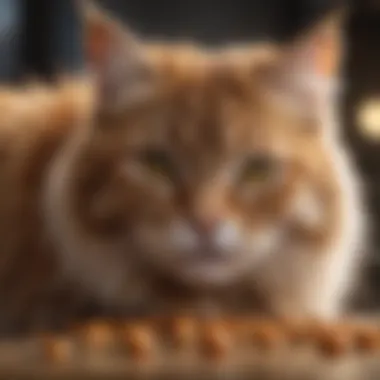

Fiber plays a vital role in a cat's diet, particularly for indoor cats prone to hairballs. Consuming high-fiber cat food helps facilitate digestion and the elimination of hair that accumulates in their stomachs. Including fiber in their diet can also address potential constipation and contribute to a healthy digestive tract.
Look for cat foods that contain natural sources of fiber such as:
- Beet pulp
- Pumpkin
- Brown rice
These ingredients help support gut health and reduce hairball formation, making them an essential part of an indoor cat's diet.
Role of Moisture and Hydration
Proper hydration is essential for indoor cats, as they can be prone to urinary issues. Cats are naturally designed to get most of their moisture from food. However, many indoor cats often do not consume enough water, leading to dehydration. A diet with canned wet food can enhance moisture content, supporting kidney health and aiding digestion.
Consider incorporating wet food into your cat's diet or ensuring fresh water is always available.
A well-balanced approach to nutrition will create a robust foundation for your indoor cat's health, reducing the incidence of hairballs and promoting overall wellness.
Choosing Cat Food for Hairball Control
Selecting the right cat food is crucial for managing hairballs, especially for indoor cats. Indoor cats tend to groom themselves more often due to their lower activity levels. This leads to the ingestion of fur, which can cause hairballs. Therefore, it is important to choose cat food that specifically aids in reducing hairball formation.
When looking for hairball control cat food, pet owners should focus on several elements. First, consider the fiber content. Fiber helps move hair through the cat’s digestive system, minimizing the chance of hairballs. Ingredients like psyllium, beet pulp, and flaxseed are beneficial. Additionally, moisture content can also play a role. Wet food, for instance, contributes to hydration which facilitates smoother digestion.
Ultimately, finding the right cat food is about creating a balance. It must satisfy the cat's taste while providing the necessary nutrients to address hairballs effectively. Here are the essential points to consider when choosing cat food for hairball control:
- Check the Ingredient List: Look for high-quality sources of protein and fiber.
- Understand Your Cat's Needs: Every cat is unique, so their dietary requirements may differ.
- Balance Between Wet and Dry Food: Consider a mix of both to provide variety and enhance hydration.
Choosing suitable cat food is a proactive approach to maintaining your cat's health and well-being.
Key Ingredients to Look For
When seeking the best cat food for hairball control, certain ingredients stand out. The following are the most beneficial:
- Moderate Levels of Fiber: Choose food that contains natural fiber sources such as brown rice or oatmeal. This helps in the efficient movement of hair through the digestive tract.
- Omega Fatty Acids: These support overall skin and coat health, reducing shedding and subsequently the intake of fur during grooming.
- High-Quality Protein: Look for named meat sources, as these promote muscle maintenance and overall health.
These ingredients play a significant role in hairball management. By choosing foods rich in these components, pet owners can contribute to their cat's digestive health and comfort.
Brands Known for Hairball Control
Brand A Overview
Brand A is regarded for its specific formulation aimed at hairball control. The primary feature of this brand is its enhanced fiber blend, which includes natural ingredients that assist in hair management. This makes it a popular choice among cat owners who seek effective solutions for hairball issues. However, one must consider that some cats may prefer different flavors, impacting overall satisfaction with the food.
Brand B Overview
Brand B offers a well-rounded formula enriched with both fiber and essential vitamins. This brand is appreciated for its balance of wet and dry food options available for cats. Its unique selling point is the inclusion of probiotics that promote digestive health and can potentially aid in reducing hairball formation. On the other hand, the price point may be a concern for some pet owners.
Brand Overview
Brand C stands out for its affordability and specialized ingredients aimed at hairball prevention. This brand emphasizes using real meat as the first ingredient, which supports a healthy coat. The drawback, however, might be a lower fiber content compared to other premium brands, which could lead to mixed results regarding hairball control.
Wet vs.
Dry Food Choices
When it comes to addressing hairballs, both wet and dry cat food hold their advantages. Wet food often contains more moisture, helping to keep cats hydrated. This hydration can support softer stools and facilitate smoother digestion, potentially reducing hairballs.
Dry food, on the other hand, can be advantageous for dental health. The texture can help reduce plaque buildup, promoting oral hygiene. Additionally, some cats may prefer the crunchiness of dry food.
Choosing between wet and dry food is ultimately about your cat's preferences and needs. An optimal strategy could involve integrating both types into your cat's diet to reap the benefits of each.
Regular evaluation of your pet’s health and dietary needs is key to maintaining their overall well-being.
Benefits of Hairball Control Food
The relevance of food designed for hairball control cannot be overstated. These specially formulated diets offer various crucial benefits for indoor cats, enabling pet owners to address a common concern that affects their feline companions. By understanding these benefits, one can make informed decisions regarding their cat's nutrition, ultimately improving overall health and quality of life.
Reducing Hairballs Effectively
One of the primary objectives of hairball control food is to significantly reduce the formation of hairballs in cats. This is achieved through specific ingredients that enhance the cat's digestion and promote healthy elimination of ingested hair. By providing a blend of high-fiber ingredients, such as beet pulp and psyllium husk, these foods facilitate smoother passage through the digestive tract.
When cats groom themselves, they ingest loose fur, which can accumulate in the stomach, leading to hairballs. A diet rich in fiber can help manage this issue by ensuring that the hair ingested is expelled more readily. Consequently, there may be fewer instances of hairball-related vomiting, which can be distressing for both the cat and the owner. Maintaining a consistent diet focused on hairball control can lead to noticeable improvements in the frequency of hairball formation over time.
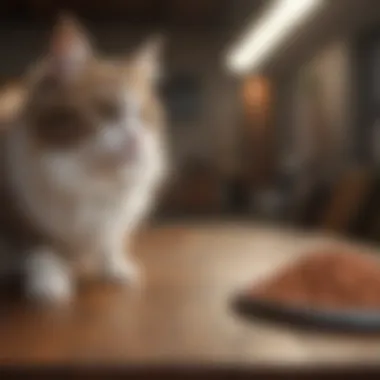

It’s essential for cat owners to recognize that while hairball control foods are effective, they should remain part of a balanced diet that addresses all nutritional needs of indoor cats.
Other Health Benefits
Beyond the direct impact on hairball reduction, feeding cats hairball control food can bring additional health benefits. For instance, many formulations include nutrients that support overall digestive health. Ingredients like probiotics and prebiotics can enhance gut flora, leading to better nutrient absorption and less digestive upset. A healthy digestive system contributes to a cat's alertness and activity levels, something pet owners often observe in cats consuming suitable diets.
Additionally, many hairball control formulas are designed to support skin and coat health. Ingredients such as omega-3 and omega-6 fatty acids not only contribute to a lustrous coat but also help in reducing excessive shedding, which is another way to minimize the quantity of fur that cats ingest. A healthier coat can also reduce irritation and the likelihood of skin issues, thus promoting general well-being.
Homemade Solutions for Hairball Prevention
Homemade solutions for hairball prevention offer pet owners a proactive approach to managing this common issue in cats. Many cat owners prefer preparing meals at home, allowing for control over ingredients and flavors. This section provides insight into why homemade options can be beneficial, the types of recipes that may help, and the importance of involving a veterinarian in the process.
Nutritional Recipes for Indoor Cats
Creating homemade recipes for indoor cats can cater to their unique nutritional needs while addressing hairball formation. The aim is to incorporate ingredients that aid digestion and promote healthy fur. Here are some crucial components to consider:
- High-quality protein: Chicken, turkey, and fish are excellent sources. They ensure your cat gets the essential nutrients he or she needs for overall well-being.
- Fiber-rich ingredients: Adding pumpkin or sweet potato provides soluble and insoluble fiber, which helps in pushing hair through the digestive system.
- Healthy fats: Omega-3 and Omega-6 from fish oil can improve skin and coat health, contributing to less shedding, which in turn can reduce hairball formation.
An easy homemade recipe might include cooking chicken and mixing it with steamed pumpkin and a small amount of fish oil. The balance of protein, fiber, and healthy fats could create a nutritious meal that supports hairball control.
Consulting with a Veterinarian
Consulting with a veterinarian is vital when considering homemade diets for your cat. They can provide insights on nutritional balance, possible deficiencies, and how to incorporate the solutions effectively.
- Nutritional balance: A vet can help ensure that the homemade diet meets all necessary dietary requirements. They may recommend supplements if certain nutrients are lacking.
- Understanding allergies or sensitivities: If your cat has specific allergies, a vet can advise on safe food alternatives and ingredients.
- Monitoring health: Regular check-ups can help assess how well the homemade diet is supporting your cat's health, including their coat condition and overall well-being.
By collaborating with a vet, you can maximize the benefits of homemade solutions in managing hairball issues while ensuring that your cat receives a balanced diet.
Monitoring Your Cat's Health
Monitoring your cat's health is fundamental in maintaining their overall well-being, especially for indoor cats that face unique challenges. The right diet to control hairballs is crucial, but it should be accompanied by regular assessments of your cat's health. Cats are adept at hiding discomfort or health issues, making vigilant observation key to prevention and early intervention. This section emphasizes the many elements involved in keeping track of your cat’s health, highlighting the benefits and considerations surrounding it.
Regular Check-ups and Consultations
Regular veterinary check-ups form the backbone of health monitoring for indoor cats. These appointments help to identify potential health concerns before they become serious. A veterinarian can assess your cat's weight, dental health, and overall physical condition. When it comes to hairball issues, your vet can recommend specific cat foods and dietary strategies. The frequency of these check-ups can vary. For generally healthy adult cats, an annual visit may suffice. However, senior cats or those with pre-existing health conditions may need biannual assessments.
Benefits of Regular Check-ups:
- Early Detection: Finding health issues early can lead to better treatment outcomes.
- Expert Advice: Your vet can tailor dietary recommendations based on your cat's age, breed, and lifestyle.
- Vaccinations: Keeping up with vaccinations protects against serious diseases.
With regular consultations, you increase the chances of your cat living a longer and healthier life while also effectively addressing any hairball concerns.
Recognizing Changes in Behavior
Cats can exhibit subtle changes in behavior that may indicate underlying health issues, making it essential for owners to remain alert. Any shift in habits should not be dismissed. For instance, if your cat starts avoiding playtime or exhibits lethargy, these could be red flags. Changes in litter box usage, eating patterns, and social interactions are also significant. Some common behavioral changes that may relate to hairball problems include:
- Decreased Appetite: If your cat shows less interest in food, it may indicate nausea or digestive upset related to hairballs.
- Increased Grooming: Excessive grooming can lead to more hair ingested, causing more hairballs.
- Vocalizations: Changes in vocal sounds could suggest discomfort or distress, linked to digestive issues.
Understanding your cat’s normal behavior is key to noticing these changes. This attentiveness allows for timely action, potentially preventing severe health issues and increasing your cat's comfort, particularly when managing hairball formation. Overall, proactive monitoring paired with dietary focus creates a holistic approach to your indoor cat's health.
Finale
Understanding the significance of selecting the right cat food cannot be overstated. The conclusion of this article highlights the vital role that appropriate nutrition plays in managing hairballs, especially for indoor cats. It is important to recognize that hairballs are not merely an inconvenience; they can lead to discomfort and potential health issues for your feline companion.
By carefully choosing food that caters to a cat's specific needs, including adequate fiber and hydration, owners can significantly reduce the frequency of hairballs. Such preventative measures not only enhance your cat's quality of life but may also lead to long-term benefits in health. A well-balanced diet contributes to factors like better digestion, improved coat health, and overall well-being.
As pet owners, one should consider various aspects when selecting food:
- Quality Ingredients: Seek out brands that prioritize high-quality, natural ingredients.
- Nutritional Profile: Ensure that the cat food meets the recommended standards for indoor cats, particularly regarding fiber content.
- Brand Reputation: Look for brands that are well-regarded in the industry for their commitment to pet health.
Understanding these elements can lead to more informed choices. Taking the time to evaluate your options may seem tedious, but it's a worthy endeavor.
In essence, effective hairball control is integral to your cat's health, underscoring the necessity for quality nutrition.
Summary of Key Points
To recap, the discussion has covered vital elements related to hairball control in cats. Key points include:
- Hairballs are a common issue for both indoor and outdoor cats, and they can cause discomfort.
- Indoor cats have unique nutritional needs that must be addressed to mitigate hairball formation.
- High-quality cat food with specific ingredients can significantly reduce hairballs.
- Regular monitoring of your cat's health and behavior can provide insights into how well the chosen diet is performing.
Each point contributes to a greater understanding of how to effectively manage and prevent hairballs through diet.
Final Recommendations for Pet Owners
For pet owners looking to improve their cats' lives, here are some final recommendations:
- Choose Hairball Control Food: Prioritize commercial cat foods specifically labeled for hairball control. Observe the ingredient lists for critical components like fiber and moisture.
- Consider Regular Vet Visits: Schedule periodic check-ups to ensure your cat remains healthy. A veterinarian can provide customized advice and dietary recommendations.
- Monitor Changes in Behavior: If you notice any changes in your cat’s eating or grooming habits, evaluate their current diet and consult with a vet if necessary.
- Stay Informed: Keep up with new research on feline nutrition and emerging products in the market.
By following these recommendations, pet owners can help ensure their indoor cats remain healthy and free from the discomfort caused by hairballs.









